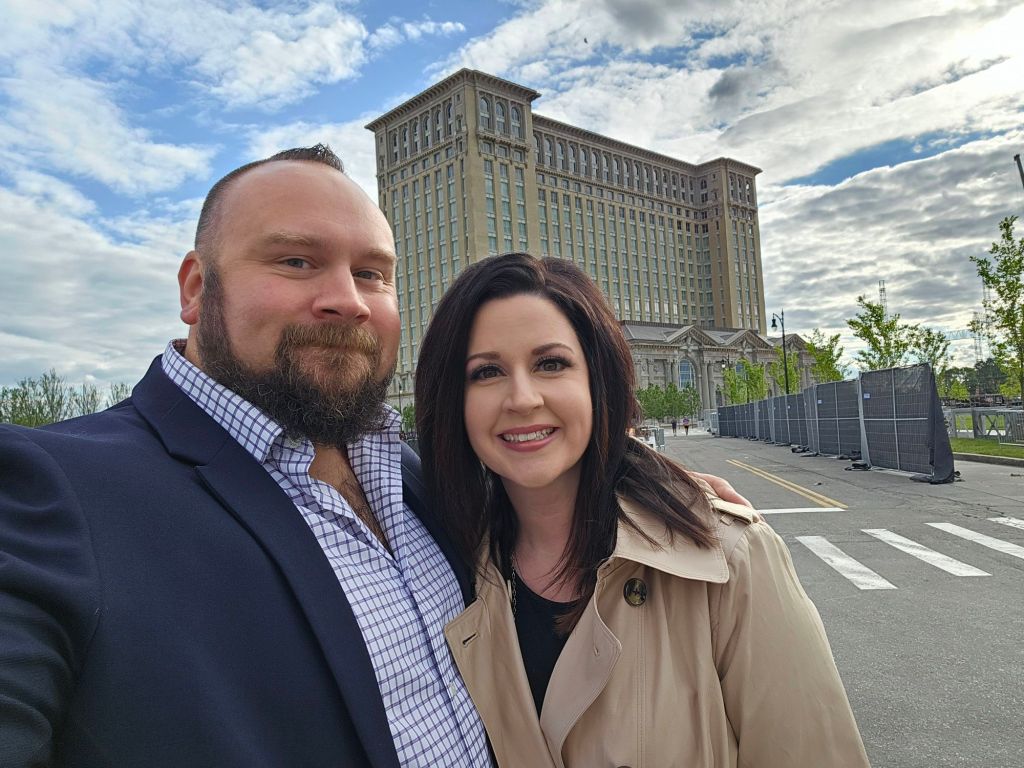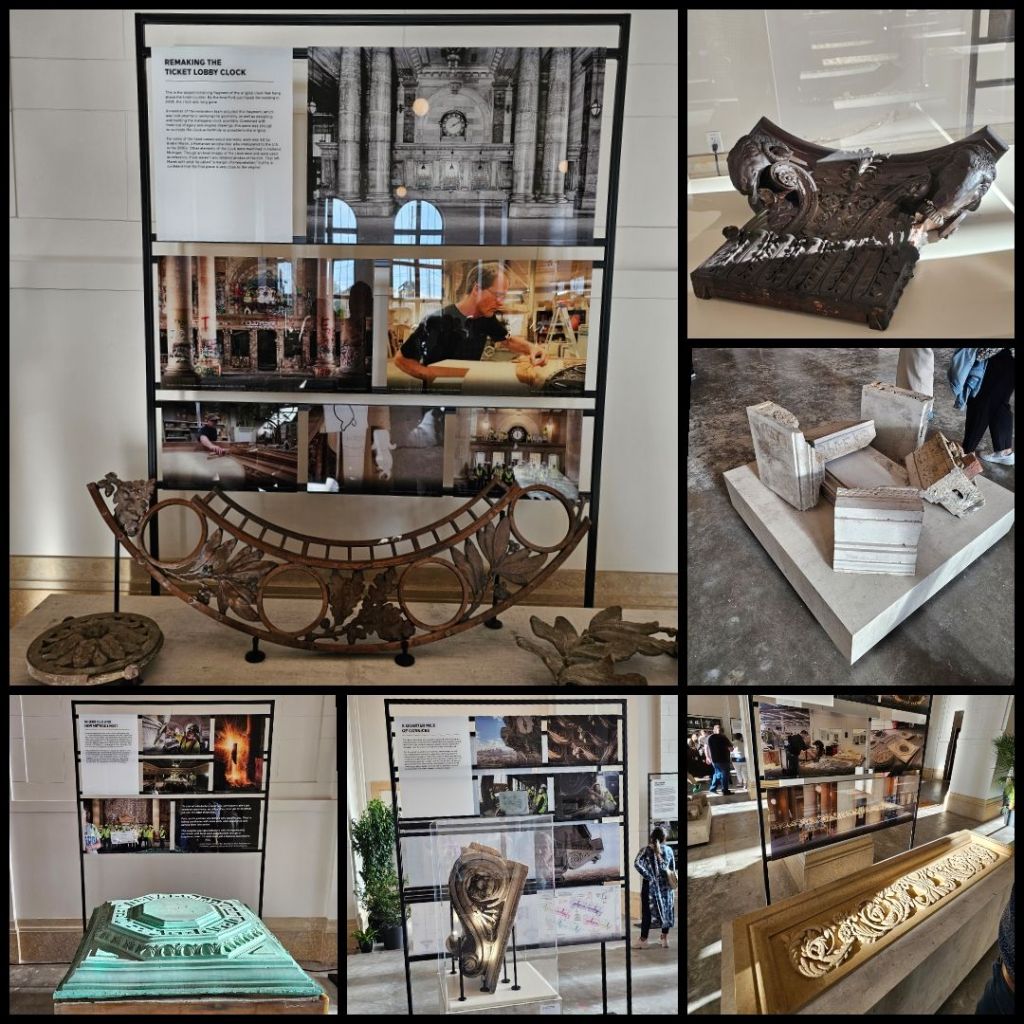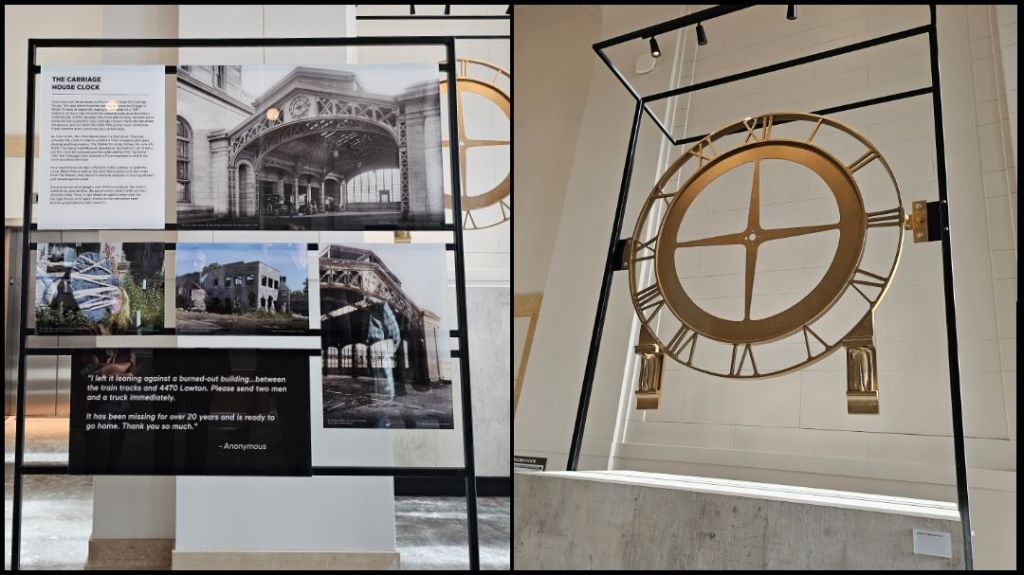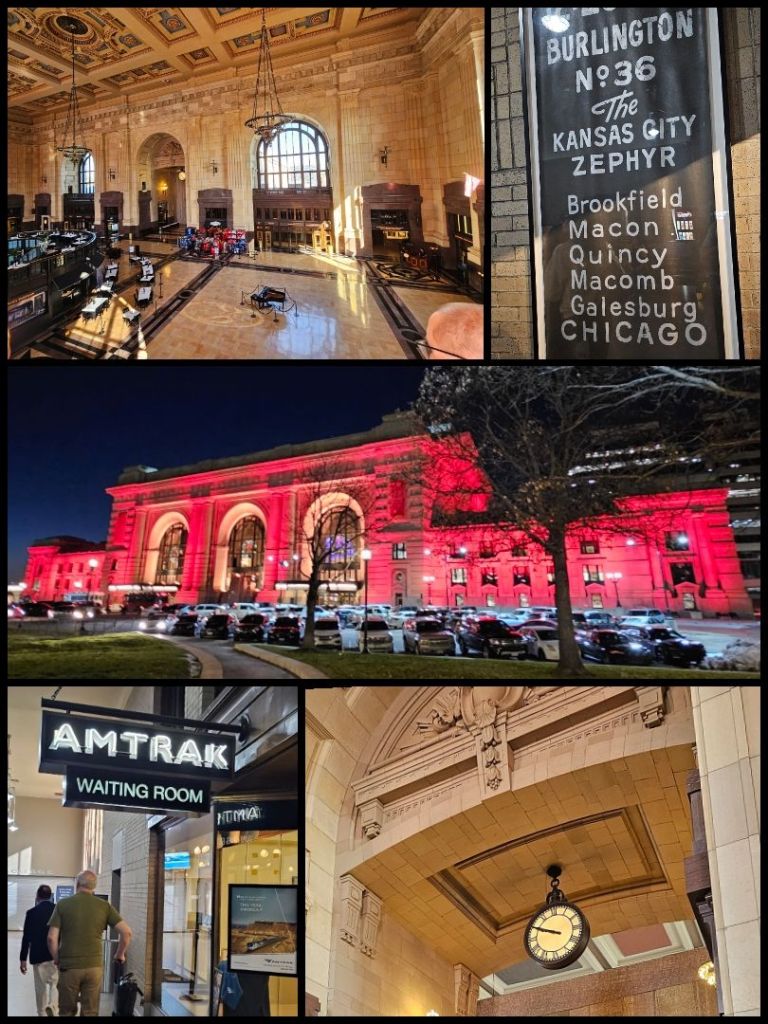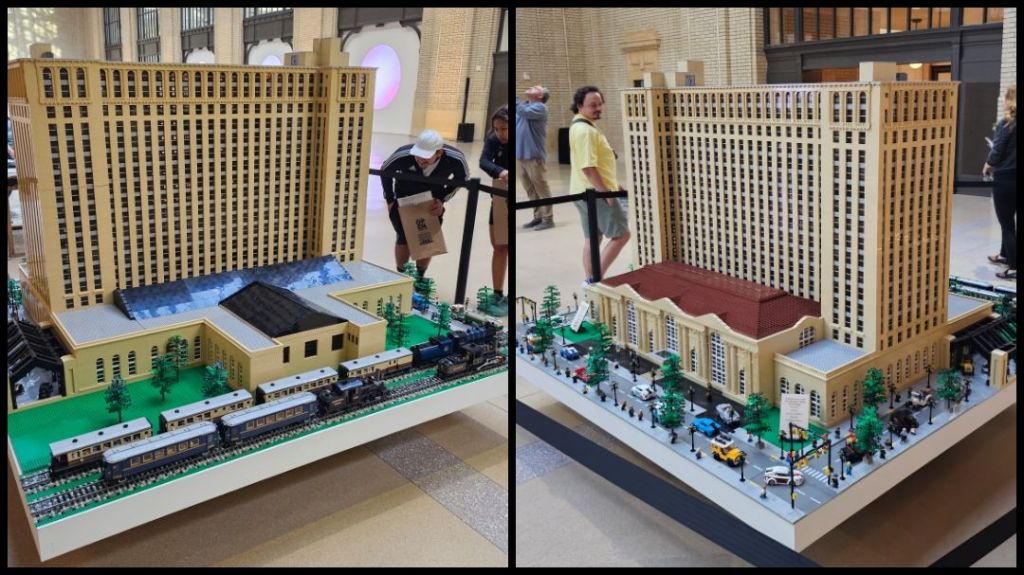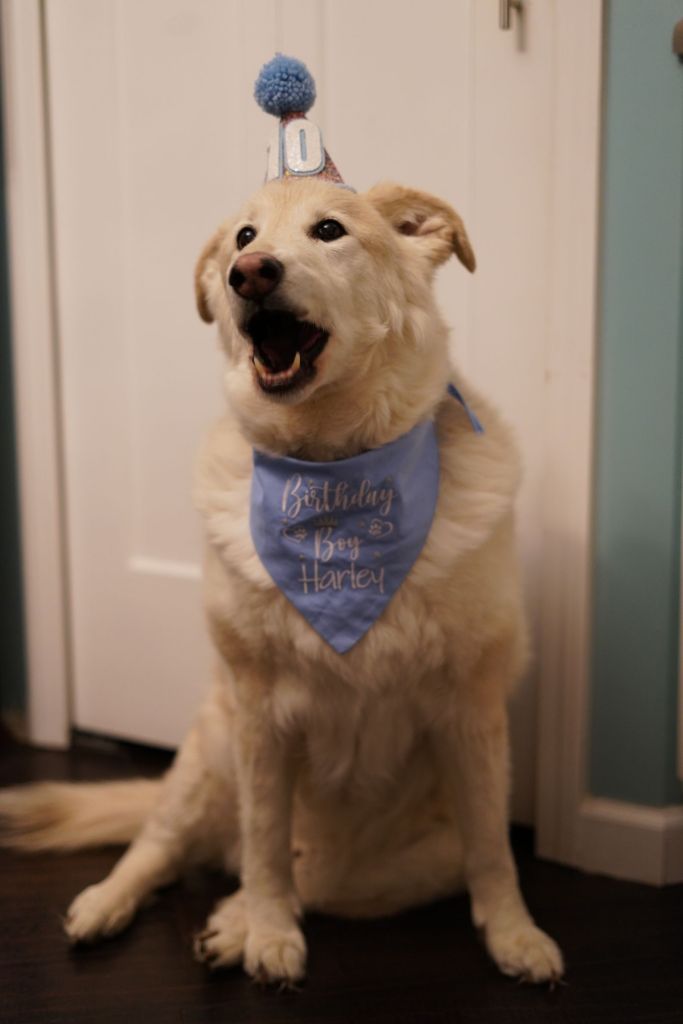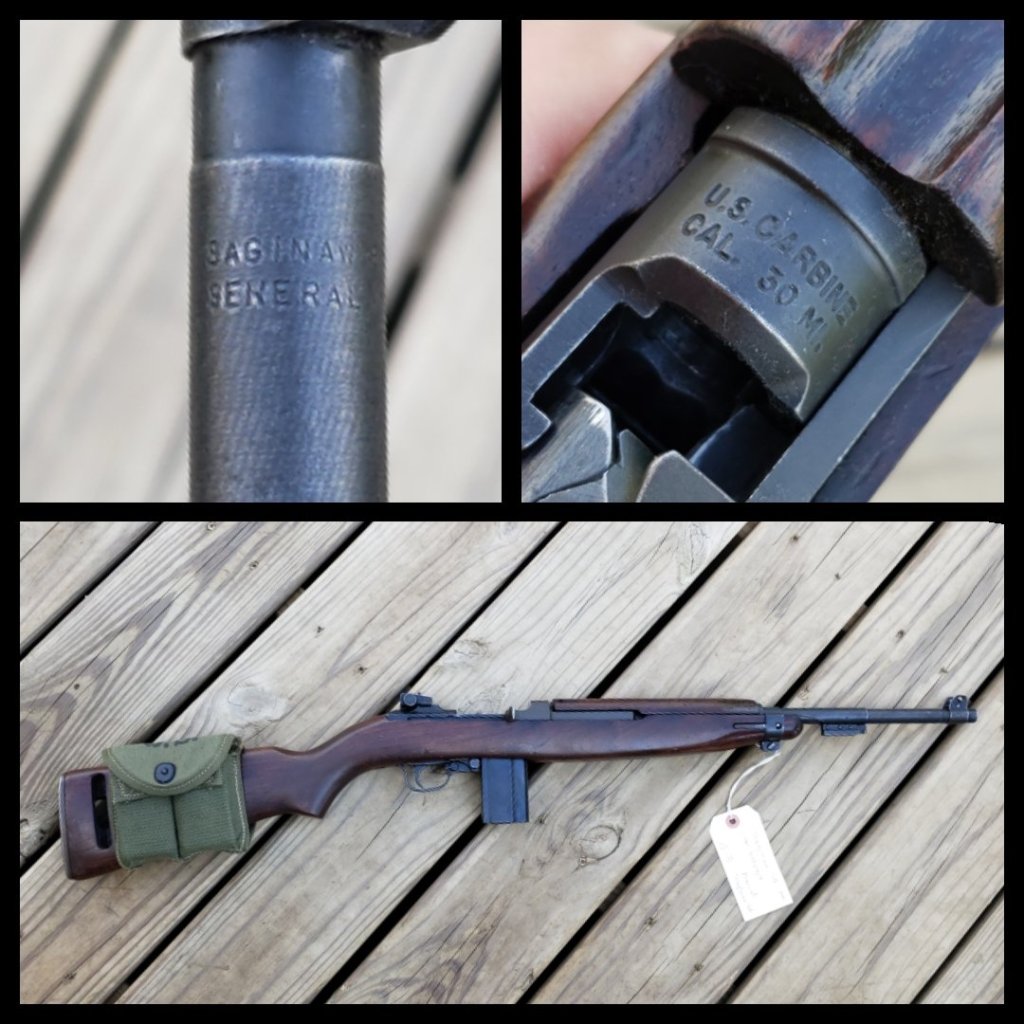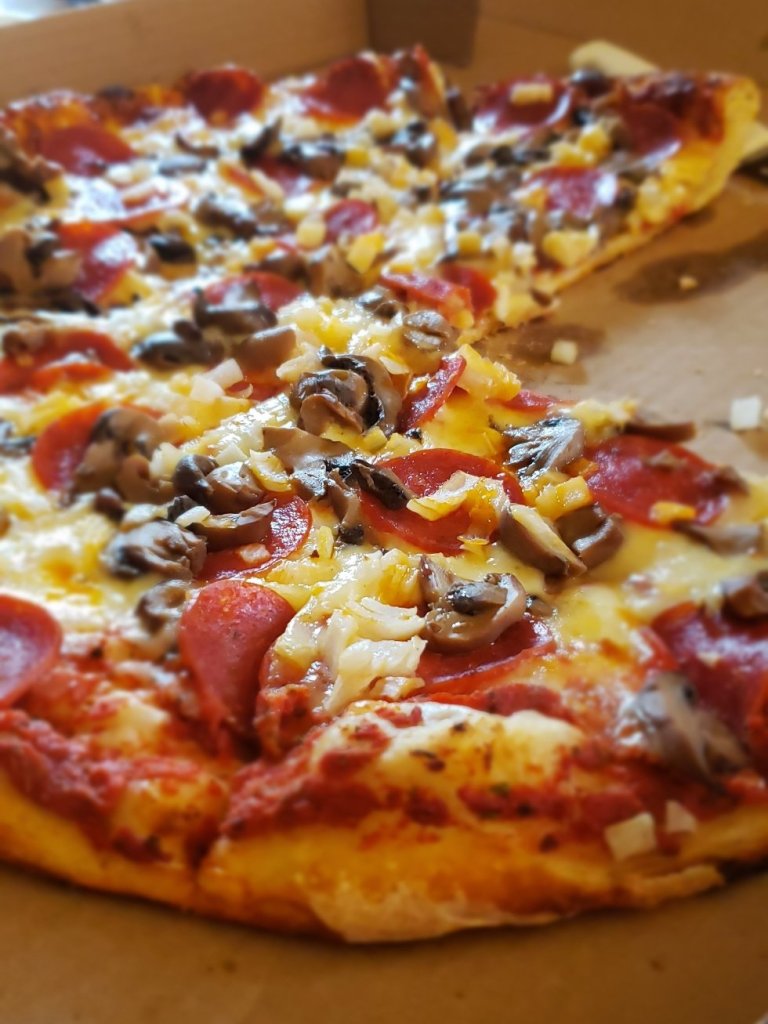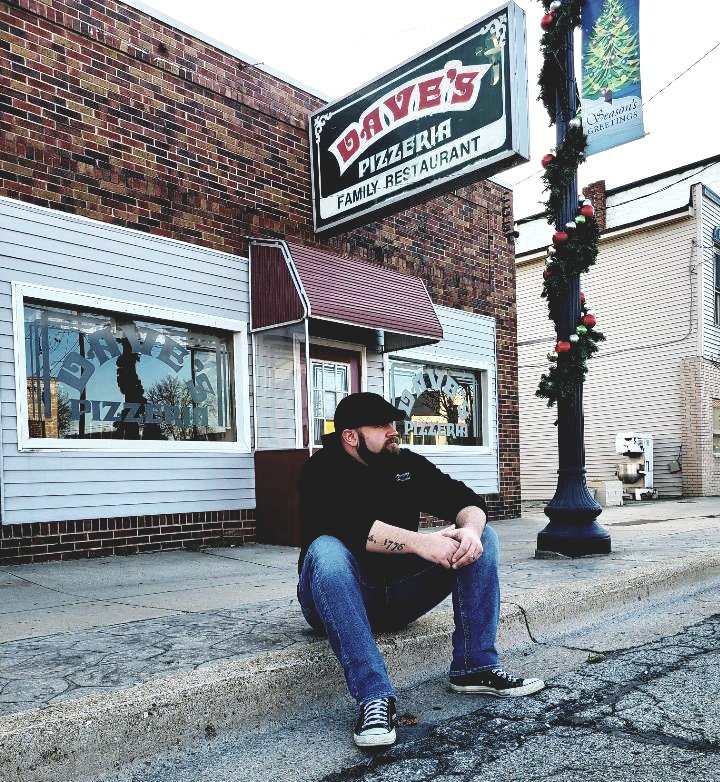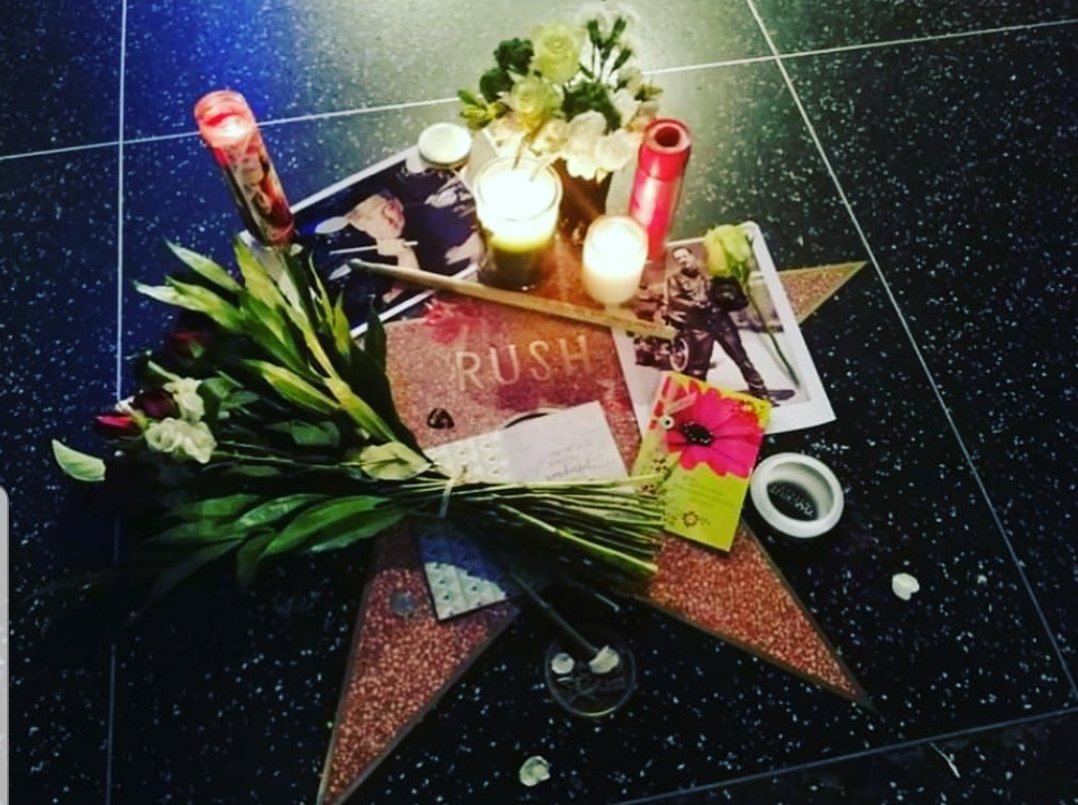
As a youngster growing up in the small community of Swartz Creek, Michigan, I can vividly recall the sounds of the progressive rock power-house band known as “Rush” filling our apartment. I’d hear the subtle static of a record player’s needle gliding through the grooves in the black vinyl of albums like “2112,” “Moving Pictures,” “Fly By Night,” “A Farewell to Kings” and “…all The Worlds a Stage” from my bedroom while my dad and his friends would play games like darts, Risk, Yahtzee, or cribbage, a fairly regional card game. I’d find myself getting lost in the synthesizers, Alex Lifeson’s unmistakable guitar riffs, the piercing vocals and legendary bass-lines of Geddy Lee, and the thunderous, calculated precision of Neil Peart’s drumming.
Although I didn’t know it at the time, what I was hearing would forever fundamentally change not only how I looked at musicians and musicianship, but also the world as a whole.
A few years would pass, and in that time we’d move twice, eventually ending up back in Swartz Creek, but this time in a house, rather than an apartment. It was there, on my 13th birthday, that I was gifted a drum-kit from my parents. It was a very basic, entry-level, jet black, Percussion Plus drum-kit adorned with flimsy single-braced cymbal stands and Zildjian Scimitar cymbals, Zildjian’s low-budget offering for aspiring drummers.
I had no idea what to do. I was elated, yet confused, and intimidated. I didn’t know the first thing about drumming, nor did I even know where to begin. Sure, I had one year of concert band under my belt, but my proficiency on the drums was limited to one snare drum, and very basic rudiments. What the hell would I do with the rest of these drums? And now there were cymbals, too? Shit.
Then my father did something I never anticipated; He sat down, and began to play the drums. Mind you, in my thirteen years of life up until this moment, I never even knew my dad had ever played the drums, so this was a fresh revelation. Instantly, he became ten times cooler, and at that point, he became my first real drum teacher.
I would learn the basics from him, and then I’d move on and begin to study the works of other drummers; Well before there was a vast plethora of visual aids from such mediums as YouTube, or Instagram, I’d simply plug CD’s into my player, don a pair of headphones, and attempt to play along with what I heard. I’d have to skip the more challenging songs, but I’d circle back to them as my skill-set improved; I’d play along to bands like Metallica, and Godsmack, Creed, Taproot, and, eventually, when my competency had reached such a level, I’d slip a Rush song into my practice regimen here and there. It was never a constant for me; I revered Neil’s drumming and artistry as far beyond my capabilities, so I’d often play watered-down versions of the pieces he’d carefully crafted, rarely aspiring to perfectly emulate his iconic style or playing. Regardless, by natural virtue of subconscious learning through pure repetition, each time I’d play a song through, I’d learn something new; perfecting drum fills, or parts I’d missed before.
Taking a moment to rewind the clock by a few decades, in the late 70’s my father was becoming an absolutely rabid fan of Rush. He’d jumped on board at the very beginning when the band was just cutting their teeth, opening for larger bands like KISS. During that time, while he was serving in the U.S. Marine Corps, he would take in concerts on the west coast, which had an exponentially broader music scene than we had here at home.
It stands to reason that for any drummer, like my dad, there’s an inherent draw to the band; Even if you didn’t care for their music, Neil’s drumming commanded respect from all of those who could truly appreciate exactly what he was doing. The proficiency, the calculated intricacies, the dynamics, the time signature changes, it’s all there for the studying, and self development.
A few years later, my parents were married, and not long after that came me. My dad fought a valiant battle in trying to name me “Neil,” but alas, a childhood promise between my mother and my uncle would have me bear the name I do.
I still remember my dad asking for Rush’s “Test for Echo” album for his birthday in 1996, three months after I’d begun playing the drums. He insisted that I listen to it; assuring me that I would have a new found appreciation for what I was hearing now that I, too, was a drummer.
He was right.
I was hooked. I listened to it over, and over, and over again, eventually “borrowing” it into my own collection (I’d give it back when I finally got my own copy). With a mere three months of drumming experience under my belt, I didn’t dare attempt to play along with it, but I was absolutely floored by what I was hearing. The thing about Rush is that they evolved with the times. Their musical style, and Neil’s lyrical writing, would shift with the trends of the day, and Test For Echo was no different, with songs like “Driven” featuring a much more driving tempo than many of their songs before it, and “Virtuality,” which covered the subject matter of how a revolutionary new technology, e-mail, was changing the way relationships were conducted.
Later on I’d learn that Neil had completely altered his playing style after studying under jazz drumming instructor Freddie Gruber, even shifting the way he gripped his sticks from match style, to traditional. I’d re-listen, and become even more impressed that Neil was capable of completely altering something as fundamental as the way he gripped his sticks, and yet he was still able to play at such a ridiculously high level. How in the hell did he do that?
Rush would tour to support the album, and one month after its conclusion, Neil’s daughter, Selena, 19, was killed in an automobile accident. Nine months later, his wife, Jackie, passed from terminal cancer just months after her diagnosis.
As would be understandably so, Rush’s future was questionable, and Neil took a leave to sort things out.
I’d still continue to listen to Rush; re-introducing myself to melodies and songs I’d heard in that apartment years ago. I’d borrow more and more of my fathers albums, interspersing them with my favorites from Metallica in the rotation. I’d study the drumming, and the lyrics. Songs like “Subdivisions” helped me cope with feeling like a bit of an outcast amongst my peers in school; I was introverted, and shy. I felt awkward, and lacked confidence. In time, although I wasn’t aware of it then, drumming would change all of that for me. It would give me a sense of purpose. It was something that set me apart. In high-school, I’d practice for hours in my parents basement, playing until my hands bled; My sticks would take on a maroon tint as callouses burst, and the countless busted knuckles on drum rims would leave spatters of blood across my stark white drum heads.
In my mind, and imagination, I was playing a private concert for all the girls I had a crush on, but was too chicken to approach- in reality, I was simply playing for me. To prove that I was meant to do this. Nearly a decade later, people would spend their hard-earned money to watch me play the drums (even playing a few sold out shows at the Machine Shop in Flint, Michigan- A modern day staple in the music scene, highly regarded by the artists who have performed there as one of the best places to play in America); Naturally, it’s something I’ve always been quite proud of, regardless of the limited success we would collectively find as a band. I still cherish those nights on stage, and the time behind the scenes, writing, and in recording studios, as some of my fondest memories with some of my closest friends.
Five years after the tragedies in Neil’s life, in 2002, the patience of legions of Rush fans were rewarded with the release of their album “Vapor Trails.”
The album released just a few weeks before I’d graduate, and I couldn’t wait to get out of school and purchase a copy from the local Best Buy on release day. However, unlike with Test For Echo, I purchased two copies. One for my dad, and one for myself. There would be no sharing this time around.
The opening track, “One Little Victory,” aptly named since it felt like a victory simply to see Rush back together, illustrated the bands commitment to growing with the times. The song started out with a crushing double-bass drum assault capable of rivaling most heavy-metal drummers of the day, and much of the album was heavier, and faster, than Rush’s prior offerings. I was absolutely in love, and I knew, after the events following Test For Echo, that if I were to see Rush, I had to do it now. I couldn’t let the opportunity slip away; After all, the future is so unbelievably unpredictable.
I begged and pleaded with my old man to get tickets, and without much convincing, he obliged. On August 12, 2002, at the D.T.E. Music Theatre, I had the absolutely life changing experience of seeing Rush for the first time. I would never be the same again. As a musician, as a drummer, as a showman, and as a fan. By this point in my drumming career, my chops had developed enough to truly appreciate what I was seeing, and it was a spectacle to behold.
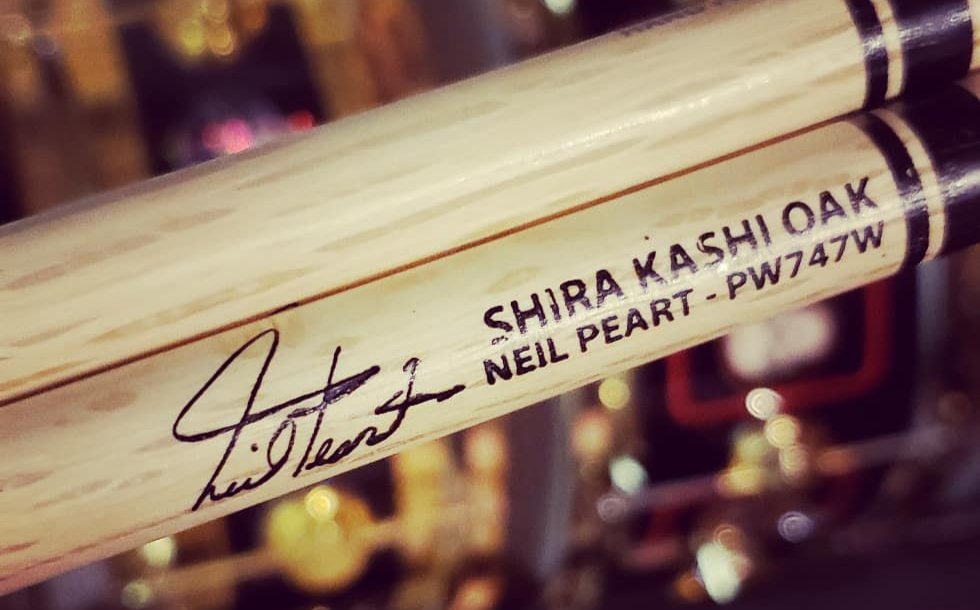
At this time, I’d even begun utilizing Neil’s signature Pro-Mark 747 Shira Kashi Oak drum-sticks; They were the exact same diameter as the Pro-Mark 5A sticks I had used before (.551″) but were 1/4″ longer (16 1/4″ overall), which made them feel more balanced, and comfortable in my hands. I’d eventually shift from his signature sticks to the exact same model, but in American Hickory, due to the slightly rougher finish of the wood, providing for a more comfortable grip in sweaty hands, and a slightly lighter weight. I also never loved the idea of using sticks that beared another man’s signature, no matter how much I revered him- Perhaps it’s an ego thing, but I never wanted to portray the vibe that I was trying to be anyone but me. Now that I’m playing quite a bit less than I was in those days, and the live shows are behind me, I’ve shifted back to the smoother, heavier Neil Peart Oak sticks.
Two years later, I’d seize the opportunity to see Rush once more, this time on their 30th Anniversary Tour (“R30”), again at DTE, but as a poor college kid, I settled for a couple of tickets on the lawn. Amongst their notable classics, the band also performed a selection of cover songs from their youth, which they had also released on an EP entitled “Feedback,” and the performance was no less impactful on an impressionable 21 year old drummer.
A few years would pass, and my obsession would grow. Eventually, I’d find myself taking a job at Guitar Center, working in the drum section, and subsequently being promoted to Assistant Store Manager in a fairly short time, and although commissioned sales was most assuredly not the life for me, I’m eternally grateful for the absolute wealth of knowledge I gained in my time there. From the customers, and the star drummers that would find their way into the store when they were passing through town to play at The Machine Shop, to the instructional DVD’s that played on the TV in the corner of the drum shop on repeat.
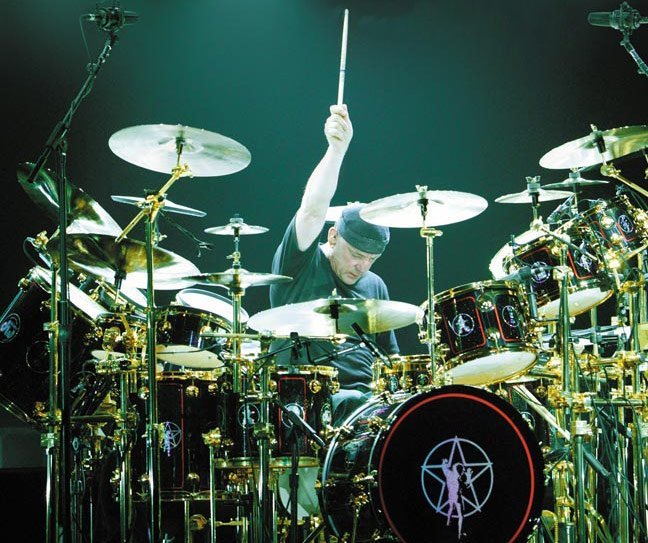
One such instructional video was entitled “Anatomy of a Drum Solo,” which chronicled the entire writing process of Neil’s drum solo from the R30 tour I’d seen a few years prior. It was a brilliant and insightful look into the mind of the man they called “The Professor,” and it delved deeply into the how, and why, he wrote things as he did. There was always a method. Everything was written with a purpose. I’d find myself lost in that video as it played time and again, when I likely should have been doing something a bit more productive, but I simply couldn’t help it.
The month following the release of the DVD, there was a sales competition throughout all of the Guitar Center stores, with the winner of each district being rewarded with an actual signed poster from Neil that was used to promote the DVD. I had to win it. I couldn’t fail. Looking back at it now, I can’t even remember what the parameters were, but I believe it had to do with selling the most instructional DVD’s, or something along those lines.
Believe it or not, the struggling city of Flint, Michigan, home to Guitar Center Store #322, simply didn’t have the massive clientele you’d expect. It was insanely difficult to rival the sales numbers of the much larger stores, but I wasn’t going to go down without a fight.
I anxiously awaited the results, and when they were released, I saw that I had finished second.
“Fuck.”
I was defeated, and disappointed.
A few weeks later, I’d forgotten about the competition.
I walked into work, and I was immediately approached by my store manager. He took me back into his office, and handed me a cardboard tube.
“What’s this?” I inquired.
“I know how much of a fan you are, so I pulled a few strings.”
I was still confused, but I opened the tube.
Somehow, he had pulled the right strings, and he was able to secure one of the signed posters from a handful of surplus that remained after the competition had ended.
I couldn’t believe it. It was such an unbelievably kind gesture, and I was ultimately moved to tears- I had it professionally framed, matted in black, with a red pinstripe to match Neil’s drums, and it still hangs in my home to this day.


In that same year, Drum Workshop, the builder of Neil’s drums, offered a signature edition Neil Peart R30 snare drum; It was a replica of the one he played on tour. As soon as I saw it, with it’s beautifully glistening black mirra finish, and 24 karat gold hardware, complete with iridescent Rush album covers in between the lugs, I knew I had to have it. Luckily, my employee discount made it even more attainable (at the time, we were able to purchase everything at cost, but D.W. put together a wonderful ambassador program that allowed seasoned employees to purchase D.W. products below Guitar Center cost, on the condition that we kept the product a minimum of one year).
Although DW Drums would have additional offerings of various Neil Peart signature edition snare drums, I would only seek to secure their R40 and R30 editions for my collection, both are absolutely beautiful tributes to Neil, and the art and technology of cutting edge drum-manufacturing as a whole.
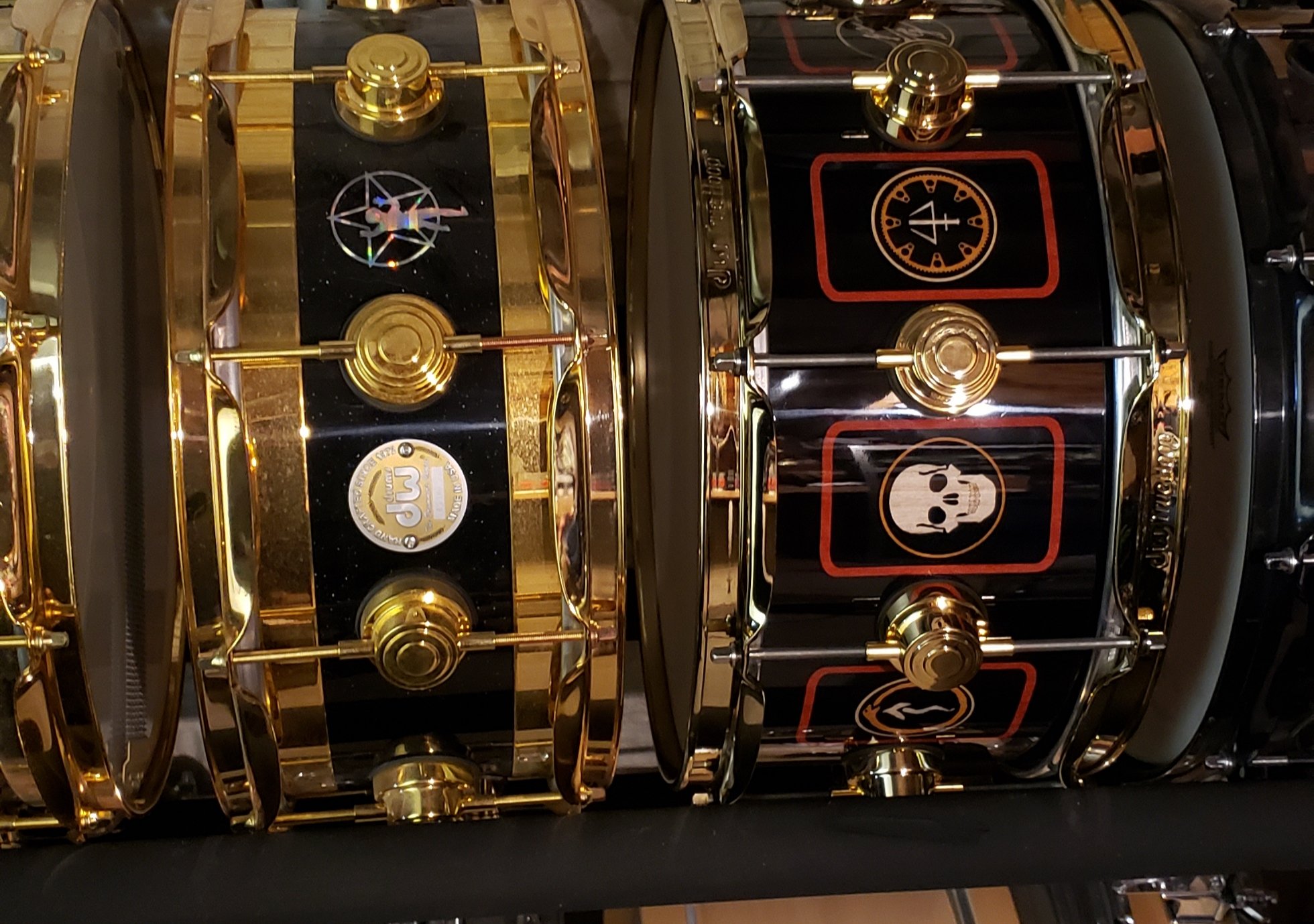
In the years that would follow, I would continue to evolve and grow as a drummer; Always inspired by the works of Neil- Somehow they simply never grew old for me. They never ceased to amaze and impress me. I would study his words, and grasp for understanding, even going so far as to begin setting up my drums in the same arrangement that he did, not because I wanted to be Neil, nor was I trying to emulate him, but because how he explained it just made sense. Things like fluidity of motion, and the ergonomics of playability, it all resonated deeply with me, and as I began to experiment with a re-creation of his set up, I learned that he was absolutely right. My playing became more fluid, and comfortable. I could play faster, and more accurately. It was something so unbelievably simple, but so astronomically effective that I couldn’t believe I hadn’t considered it.
Several years later, in 2010, after meeting the wonderful woman that would eventually become my wife, I was introduced to her cousin, Matt. Matt was a bit older than I was, but I would soon find out that he, too, was a massive fan of Rush, and on that mutual love and respect for the band (and hockey, and the game of euchre…) we would develop a friendship that has evolved into a brotherhood.
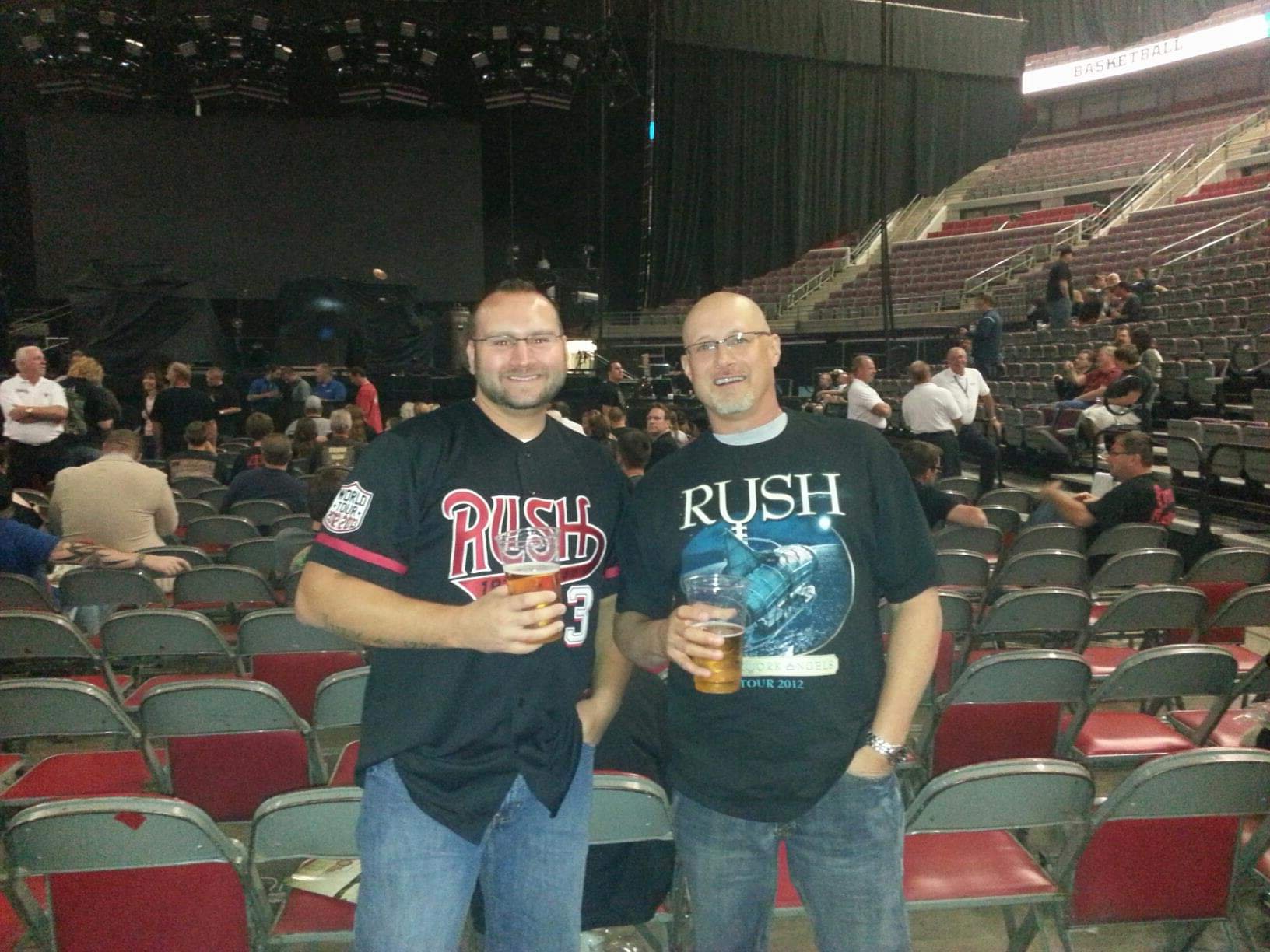
We’d waste countless hours playing cards, and listening to Rush. We’d eventually snag tickets to attend the Clockwork Angels tour together (16th row, if I remember correctly) and, along with my dad, and Matt’s friend Bryan, we’d all attend the R40 show together, as well (arguably the greatest live performance I’ve ever experienced in which the band started the show with their newest music, and subsequently stepped back in time further and further with each song, their stage setup changing with each era to emulate past tours, culminating in the finale with a high school gymnasium backdrop, complete with disco ball, Neil playing a new drum kit just like his 1970’s setups, with Geddy and Alex’s amplifiers propped up on school chairs, with microphones draped over the fronts as if they were playing in some high-school talent show back in 1974 again. It was absolutely brilliant)
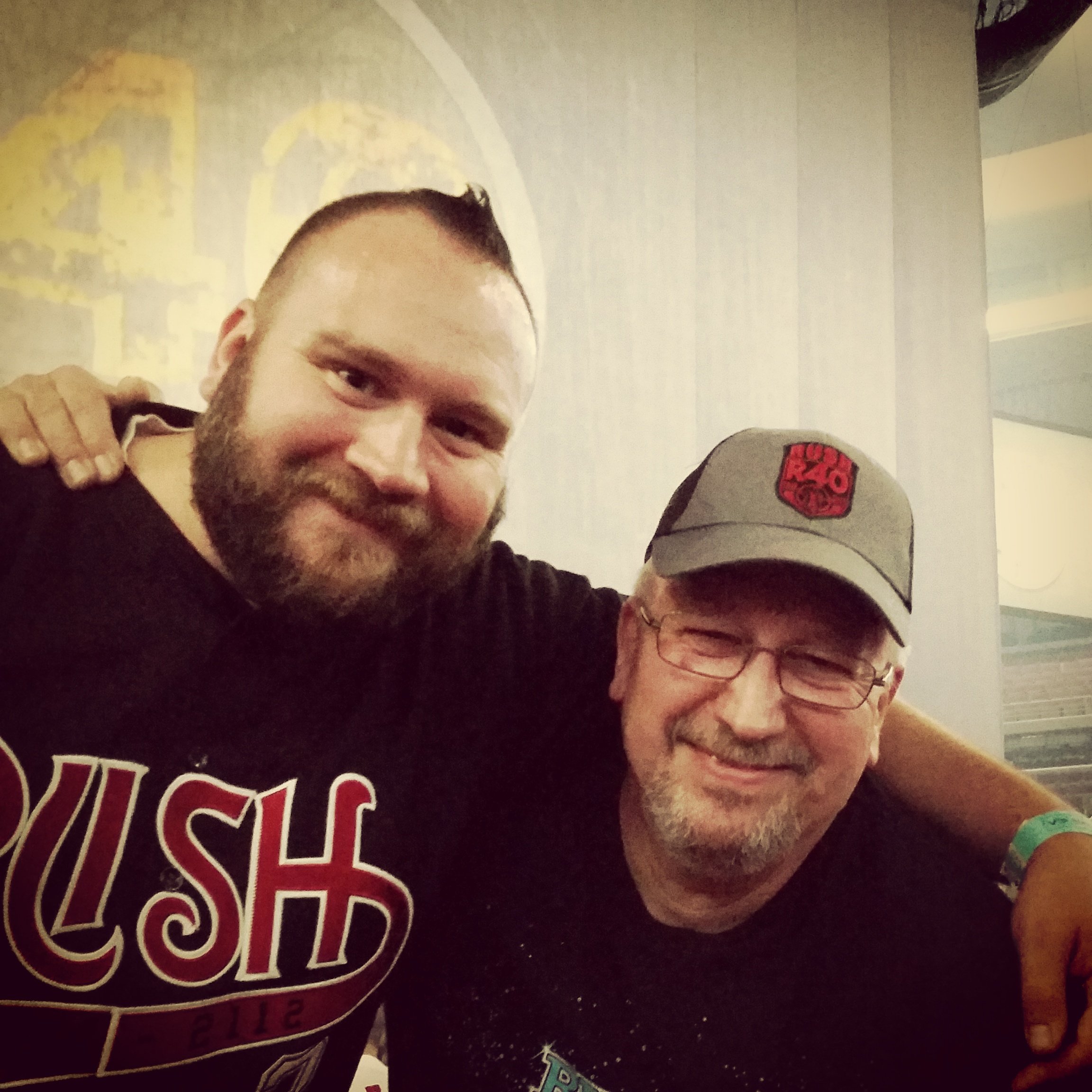
After the R40 show, we all stood around in the parking lot, drinking beers, listening to even more Rush, talking about what we loved about the show, and contemplating the likely future of the band; At the conclusion of the show, we had stuck around for a bit, watching the visual display that was projected onto the back-drop after the band had walked off stage, and the lights came up; We didn’t know if this would be our last opportunity to see the band live, or not, so we simply sought to take it all in, if only for a few more moments; Then, the “R40” logo in the center of the screen that had hovered there for a few moments began to change. The “R40” shifted towards the left of the circular logo that surrounded it, and it suddenly read “R40+,” leading us all to believe there was more to come. At the implied prospect of more Rush on the horizon, the arena erupted in a raucous ovation from those that had remained to see what we had just observed. Was the band working on a new album already? As simple of a sign as it was, it helped us leave on a high, especially since there were rumblings that Neil was planning to retire, at least from touring.
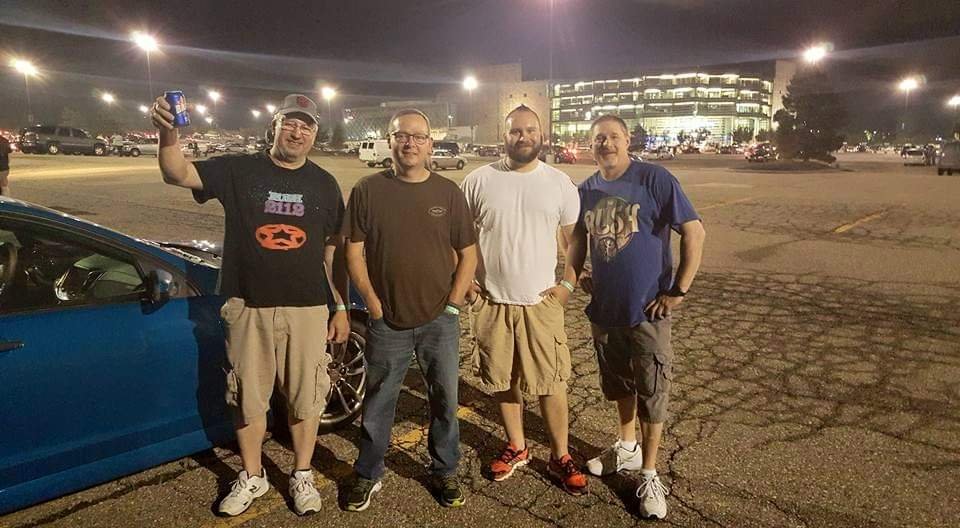
It wasn’t long before we’d realize that it was a moment of false hope.
Not long after Rush would play the final show of the R40 tour, it was announced that Neil was retiring from drumming altogether. He was suffering from bouts with chronic tendonitis, and he was no longer able to effectively perform to the level he felt he was obligated to.
Although it was a crushing blow to the fan base, Rush had given us 40+ years of music, never settling for anything less than their best, and although many of us selfishly held out, hoping for a one off reunion show, or perhaps a studio track to leak; After all, Rush had taken hiatuses in the past; Who was to say this could be any different?
It was early into the evening on January 10th; I was going through the process of trimming my beard, preparing for a night out with my wife, and our friends, Jason and Erin. As I set down my razor, I saw the screen of my phone illuminate with a new text message.
In a group text that included Matt, my friend Danny wrote;
“I’m sorry Matt and Dave. You guys had a hero go today. Neil Peart passed away today. Well it was announced today. He passed away the 7th.”
I felt every ounce of excitement slip away that I had been feeling just moments ago for the night that lay ahead. My heart sank, and without hesitation, my eyes filled with tears.
Matt and I responded with the only thought that likely felt appropriate, and almost simultaneously; “Fuck.”
In disbelief, and validating the information for himself, Matt posted a link to the CBC news story in the group text message, with the comment; “Fuck this world.”
I just couldn’t believe it.
Immediately my wardrobe selection for the night changed; Amidst composing myself, I threw on my Rush R30 baseball jersey- It just felt appropriate, and we ventured out and did our thing, but the night just never felt right to me. There was this looming black cloud over-head, and although I tried to preoccupy my thoughts with the goings on of the evening; a golf simulator, dinner, and eventually winding up at a dive bar, I could never quite shake the sadness.
At the bar, I tried to cheer myself up by purchasing a few credits for the Touch-Tunes juke-box and spinning a few Rush classics, interspersed with other off the wall selections. Other patrons at the bar commented on my jersey; “Sick jersey, man!” “R.I.P., Neil Peart!” “Fuck yeah, man! Rush!”
Suddenly, Rush songs I hadn’t selected began to appear in the rotation, and I realized that I wasn’t alone in all of this.

As my mind would wander, I felt myself growing more emotional with each Labatt Blue I consumed, and I eventually excused myself to the rest-room, where I’d fight back tears in the bathroom stall. I just couldn’t believe that such an impactful force on the direction of my life was gone.
I pulled myself together, slightly embarrassed by it all, and rejoined my wife and friends. Rachel knew I wasn’t alright.

A much needed distraction, we’d all spend the rest of our evening playing darts, shooting a few games of pool, and eventually, we called it a night.
When I got home, the gravity of it all sank in; coupled with the inebriation, I was doomed, and I absolutely lost it. Rachel consoled me, but I just couldn’t immediately come to grips with the reality of the situation. WHY?!
It took some time, but after I calmed down, and Rachel fell asleep, I scrolled through Twitter, and Instagram, reading the heartfelt posts; Some were simple condolences, and others were stories of encounters with the man who “[couldn’t] pretend a stranger [was] a long awaited friend.” They came from music industry giants and fans alike; It was tough to see, yet it was somehow therapeutic, much like this writing. I could see what this man, this icon, meant to music, and his legions of fans. The comment from one individual read, “I can only imagine how embarrassed Neil would be with all of this attention, being how private of a person he was, but I just can’t help it.”
The official Rush accounts eventually confirmed the news to the masses;
“It is with broken hearts and the deepest sadness that we must share the terrible news that on Tuesday our friend, soul brother and band mate of over 45 years, Neil, has lost his incredibly brave three and a half year battle with brain cancer (Glioblastoma). We ask that friends, fans, and media alike understandably respect the family’s need for privacy and peace at this extremely painful and difficult time. Those wishing to express their condolences can choose a cancer research group or charity of their choice and make a donation in Neil’s name.
Rest in peace brother.”
I only assumed it was written by Geddy.
I couldn’t imagine the level of heartache that he and Alex were feeling through all of this; I understand that bond with band-mates all too well; I can’t fathom the level of connection the three of those men had, as the number of hotel nights I’d spent ‘on the road’ with my band could likely be counted on both hands, paling in comparison to the 40+ years of tour buses, hotels, and recording studios they’d shared in.
Amidst the context, I put two and two together. While I knew Neil’s retirement likely was attributed to his tendonitis, it was much more likely that the greater causation for his stepping away from drums completely was the much more detrimental prognosis of brain cancer, which also aligned with the time-line of his retirement.
Following this realization, I wondered; Did he ever regret spending so much time on the road, rather than with his family and friends, or did he live his life exactly as he’d have wanted to? I’d find what I interpreted to be my answer in his writings as I read through more posts throughout the night.
One poignant, soul touching tribute from Foo Fighters front-man, Dave Grohl, the man who inducted Rush into the Rock & Roll Hall of Fame, read;
“Today the world lost a true giant in the history of rock and roll. An inspiration to millions with an unmistakable sound who spawned generations of musicians (like myself) to pick up two sticks and chase a dream. A kind, thoughtful, brilliant man who ruled our radios and turntables not only with his drumming, but also his beautiful words.
I still vividly remember my first listen of “2112” when I was young. It was the first time I really listened to a drummer, and since that day, music has never been the same. His power, precision, and composition was incomparable. He was called “The Professor” for a reason: We all learned from him.
Thank you, Neil for making our lives a better place with your music. You will be forever remembered and sorely missed by all of us. And my heartfelt condolences to the Rush family.
God bless Neil Peart.”
One of the other notable standout posts came from legendary Primus bassist, Les Claypool, a friend of Neil’s, who went on to say;
“Another genius has left the planet. Not enough can be said about the talent and influence of #NeilPeart. As a musician he was unparalleled, blasting open huge doors into the realms of new percussive stratospheres. As a lyricist he was like the Ray Bradbury of rock, penning rhymes that evoke imagery both cerebral and tactile. As a friend he was a pensive, sharp-witted intellect whom I looked up to and admired greatly. I was very fortunate to have played with him, laughed with him and rode with him at excessive speeds in one of his many exotic vehicles. I’m still trying to fathom how greatly he will be missed.”
Eventually, I went on to write a post of my own on my Instagram account;
“His body may be gone, but within us all, he’ll be forever immortal. From the kid that just picked up 2112 for the first time, to the 65 year old fan that’s hearing it for the 1,000th time, and then there’s 36 year old me that’s spent 25 years playing the drums because of him… he’ll always be a part of us all, and that’s the beauty of being an icon; You may fail to live and breathe, but you will never die. Rush lives on. Neil lives on. Rest in Beats, Professor. Thanks for everything you gave to the world. It’ll never be the same without. #NeilPeart”
The thing is, being the “best” at anything in life is such a subjective thing. Truthfully, there is always someone better; Someone faster, someone stronger, someone more precise and calculated, but when it comes to Neil, I truly believe that, in terms of drummers, there is no one that has been more influential.
You didn’t have to like Rush to appreciate his abilities, and I’ve yet to see anyone utter an unkind word about the man who has been called, time and again, a quiet, gentle giant.
I could go on for hours writing about Neil, and still never come up with anything more perfect than he’s already stated himself;
“I don’t regret that the ride has to be over, but rather feeling grateful for the miles traveled, for the sights along the way, and to be exactly where I am.” –Neil Peart (From his book, Far And Wide)

THE PROFESSOR (Exits, Stage Left)
Rest peacefully, Neil. You’ll have forever made your mark on my life, and the lives of countless others who are feeling much the same as I am these days. Thank you for sharing your gift with us all.
In this one of many possible worlds
All for the best, or some bizarre test
It is what it is, and whatever
Time is still the infinite jest
The arrow flies when you dream;
The hours tick away
The cells tick away
The Watchmaker keeps to his schemes
The hours tick away
They tick away
The measure of a life is a measure of love and respect;
So hard to earn, so easily burned
The treasure of a life is a measure of love and respect;
So hard to earn, so easily burned
In the fullness of time
A garden to nurture and protect
In the rise and the set of the sun
Until the stars go spinning, spinning round the night
Oh, it is what is it is, and forever;
Each moment, a memory in flight
“The Garden” Rush, 2012
#Rush #NeilPeart #TheProfessor #Tribute #DrumWorkshop #DWDrums #DW #ProMark #SabianCymbals #ZildjianCymbals #Drummers #Drumming #Drum #Drums #RIPNeil #RIPNeilPeart #ExitStageLeft


